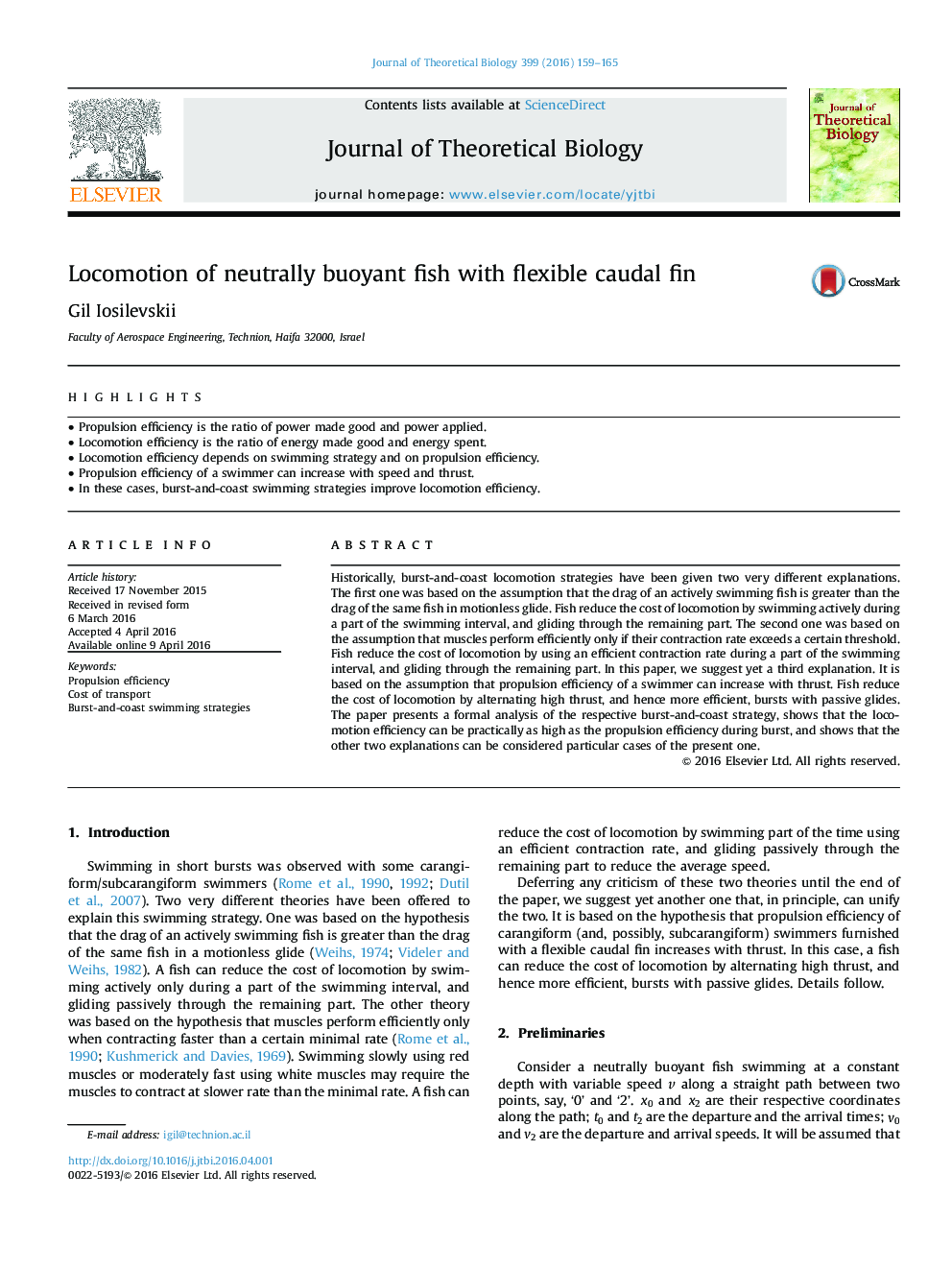| Article ID | Journal | Published Year | Pages | File Type |
|---|---|---|---|---|
| 6369248 | Journal of Theoretical Biology | 2016 | 7 Pages |
Abstract
Historically, burst-and-coast locomotion strategies have been given two very different explanations. The first one was based on the assumption that the drag of an actively swimming fish is greater than the drag of the same fish in motionless glide. Fish reduce the cost of locomotion by swimming actively during a part of the swimming interval, and gliding through the remaining part. The second one was based on the assumption that muscles perform efficiently only if their contraction rate exceeds a certain threshold. Fish reduce the cost of locomotion by using an efficient contraction rate during a part of the swimming interval, and gliding through the remaining part. In this paper, we suggest yet a third explanation. It is based on the assumption that propulsion efficiency of a swimmer can increase with thrust. Fish reduce the cost of locomotion by alternating high thrust, and hence more efficient, bursts with passive glides. The paper presents a formal analysis of the respective burst-and-coast strategy, shows that the locomotion efficiency can be practically as high as the propulsion efficiency during burst, and shows that the other two explanations can be considered particular cases of the present one.
Related Topics
Life Sciences
Agricultural and Biological Sciences
Agricultural and Biological Sciences (General)
Authors
Gil Iosilevskii,
